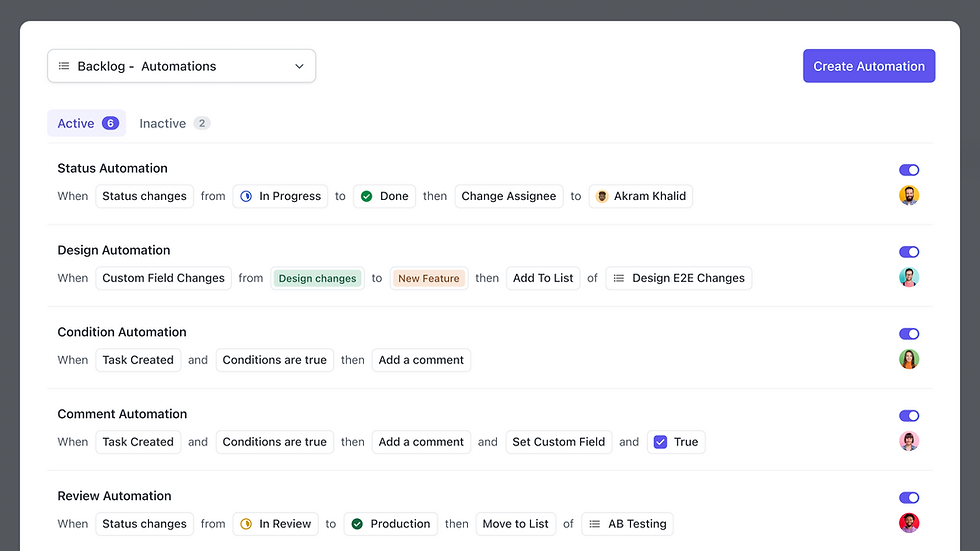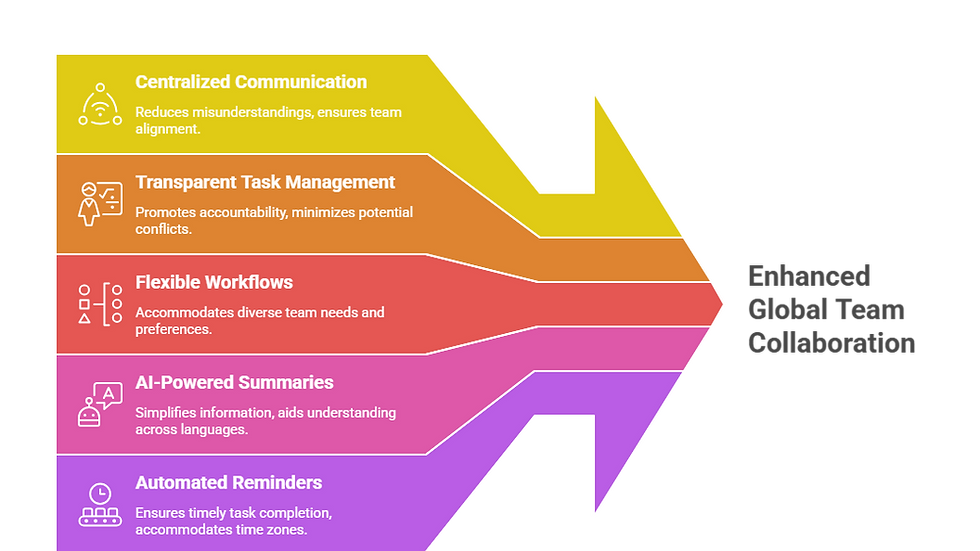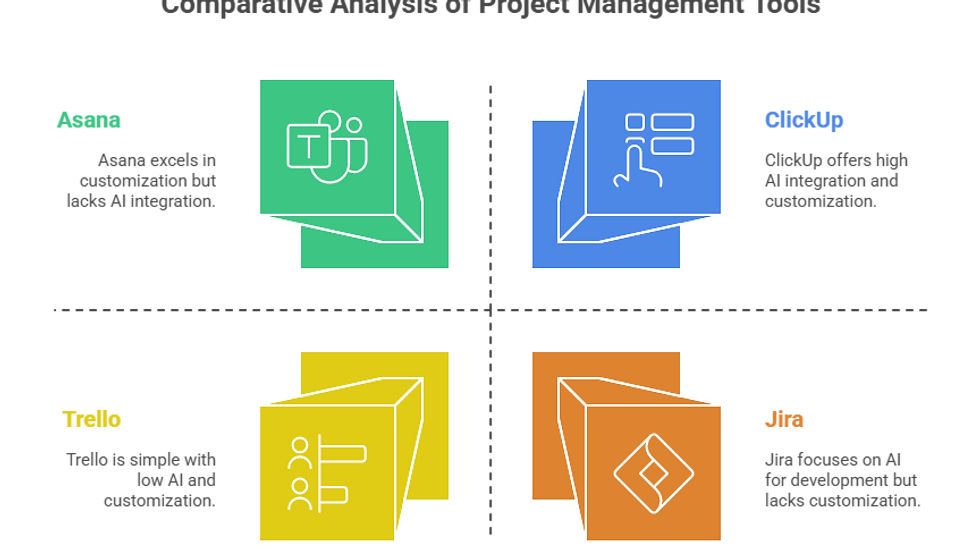Managing Cultural Differences in Global Teams
- Yasir Ali Warraich

- Jul 25
- 6 min read
Updated: Sep 8
Are Cultural Misunderstandings Slowing Down Your Global Team?
Imagine your project kickoff meeting just ended. Your European team is already updating timelines. The Asian team is politely waiting for a follow-up message. The American team wants a decision, now. No one’s wrong—but everyone’s misaligned. And that’s where AI and smart tools step in.
In the world of global projects, managing cultural differences is one of the most overlooked—and underestimated—challenges. With remote work, hybrid teams, and distributed talent becoming the norm, project managers are expected to lead across time zones, values, communication styles, and expectations.
So, how can you manage it all without dropping the ball? The answer lies in using AI-powered project management tools—and knowing how to apply them.
Understanding Cultural Differences in Project Teams
Culture affects how people perceive deadlines, feedback, authority, and collaboration. Misunderstandings may arise from:
Communication styles (direct vs indirect)
Attitude toward hierarchy (flat vs formal)
Work approaches (individual vs group focus)
Time orientation (strict deadlines vs flexible timelines)
When you’re managing a global team, ignoring these cultural cues leads to confusion, delays, and even conflict.
This is where AI can help. AI tools don’t just automate tasks—they give you insights, patterns, and behavioral data to make better decisions, assign tasks based on working styles, and improve communication.
Let’s explore how.
Challenges Arising from Cultural Differences
Cultural differences can manifest in various ways within global teams, leading to several challenges:
Communication Barriers: Language differences, varying communication styles (e.g., direct vs. indirect), and nonverbal cues can create misunderstandings and hinder effective communication.
Conflict and Misunderstandings: Differing values, beliefs, and perspectives can lead to conflict and misunderstandings among team members. For example, a direct communication style may be perceived as rude or aggressive in a culture that values indirectness.
Decision-Making Processes: Cultural differences can influence decision-making processes. Some cultures prefer a top-down approach, while others favor consensus-based decision-making.
Work Styles and Expectations: Expectations regarding work hours, deadlines, and levels of formality can vary across cultures, leading to frustration and inefficiency.
Trust and Relationship Building: Building trust and strong relationships can be more challenging in global teams due to cultural differences in communication styles and social norms.

How AI Helps Manage Cultural Differences
1. Communication Insights
AI-powered tools can analyze team chats, project updates, and meeting transcripts to detect tone, misunderstandings, or potential conflict areas. For example, natural language processing (NLP) can highlight misalignment in tone or urgency.
2. Automated Language Translation
Many AI project management tools now offer built-in translation features or integrations that eliminate the language barrier without relying on third-party platforms.
3. Time-Zone Coordination
AI automatically adjusts calendars, reminders, and deadlines based on team members’ local times. It also identifies patterns—like who prefers early meetings or async updates.
4. Personalized Task Allocation
Some AI tools can learn how different people work (fast-paced, detail-focused, etc.) and assign tasks accordingly.
5. Predictive Risk Management
AI can forecast delays based on team habits, communication lags, or unresponsive members from certain regions—giving managers a chance to course-correct early.

Practical Strategies for Managing Cultural Differences
Beyond leveraging AI, several practical strategies can help project managers effectively manage cultural differences in global teams:
Establish Clear Communication Protocols: Define clear guidelines for communication, including preferred channels, response times, and meeting etiquette. Encourage team members to be mindful of their communication style and to avoid using jargon or idioms that may not be understood by everyone.
Foster a Culture of Respect and Inclusion: Create a safe and inclusive environment where team members feel comfortable sharing their perspectives and asking questions. Encourage open dialogue and active listening. Celebrate cultural diversity and recognize the unique contributions of each team member.
Provide Cross-Cultural Training: Offer training programs that help team members develop cultural awareness and sensitivity. These programs should cover topics such as communication styles, values, and beliefs.
Build Relationships and Trust: Encourage team members to build relationships with each other on a personal level. This can be done through virtual team-building activities, social events, or informal online chats.
Establish Clear Roles and Responsibilities: Clearly define roles and responsibilities to avoid confusion and overlap. Ensure that all team members understand their individual contributions to the project.
Develop a Conflict Resolution Process: Establish a clear process for resolving conflicts that may arise due to cultural differences. Encourage team members to address conflicts directly and respectfully.
Be Flexible and Adaptable: Be prepared to adapt your management style to accommodate the needs of different team members. Be open to new ideas and approaches.

Recommended Tool: ClickUp
Among all the tools available, ClickUp stands out as an all-in-one project management platform powered with smart features that support cross-cultural teams.
What Is ClickUp?
ClickUp is a cloud-based project management and productivity tool designed to handle tasks, docs, communication, goal tracking, and reporting—all in one place. It is used by global brands like IBM, Spotify, and Logitech to streamline work across borders.
Key Features of ClickUp
AI-Powered Assistance
Smart suggestions for task prioritization
Automated summaries of meeting notes and discussions
Natural language command support (e.g., "create a task for John with a deadline on Monday")

Cultural Context Features
Customizable dashboards per region or team
Task templates based on workflow preferences
Integrated translations for comments and descriptions

Time-Zone and Calendar Intelligence
Unified global calendar with auto-adjusted timelines
Shared team timelines for global visibility
AI-based meeting scheduler based on team preferences

Workflow Automation
Drag-and-drop automation rules
Recurring task reminders based on working hours
Alerts when communication gaps occur

Integrated Collaboration
Docs, whiteboards, and task comments in one place
AI that suggests stakeholders or documents based on task history

How ClickUp Helps Manage Cultural Differences
While ClickUp itself doesn't directly address cultural differences, its features can be leveraged to create a more inclusive and collaborative environment for global teams:
Centralized Communication: By providing a centralized platform for communication, ClickUp helps to reduce misunderstandings and ensure that everyone is on the same page.
Transparent Task Management: Clear task assignments and progress tracking promote accountability and transparency, reducing the potential for conflict.
Flexible Workflows: ClickUp's customization options allow you to create workflows that accommodate the needs of different team members and cultural preferences.
AI-Powered Summaries: AI can summarize lengthy discussions or documents, making it easier for team members to quickly grasp key information, regardless of their language proficiency.
Automated Reminders: Setting up automated reminders for tasks and deadlines helps to ensure that everyone stays on track, regardless of their time zone or work style.

ClickUp vs Other Project Management Tools
While there are many tools that offer parts of these features, ClickUp brings them all under one unified platform.
Here's how it compares:
Asana
Great for task tracking and team overviews, but lacks deep AI integration. ClickUp offers AI-powered content generation and risk prediction that Asana does not.
Jira
Ideal for development teams with heavy sprint planning needs, but less suitable for general teams managing cultural dynamics. ClickUp provides better non-technical workflows and communication tools.
Monday
Known for visual boards, but ClickUp offers more customization, AI functionality, and built-in collaboration features in one place.
Trello
Excellent for small teams using kanban boards, but lacks ClickUp’s document management, AI insights, and automation.
Notion
Fantastic for notes and wikis, but not built for scalable project execution. ClickUp combines both documentation and structured task management with AI assistance.
Smartsheet
Spreadsheet-based system with powerful tracking, but less user-friendly for creative teams. ClickUp is more intuitive with AI built directly into user flows.
Airtable
Great for data organization but limited in communication and AI-based automation. ClickUp outperforms with smart tasking, communication, and integration.
Wrike
Strong for enterprise teams, but can be complex to navigate. ClickUp keeps things simple and centralized with robust AI support.

The Future of Managing Global Teams with AI
As workplaces become more diverse and distributed, understanding and embracing cultural differences becomes essential. AI helps you do that not by replacing human empathy, but by enhancing it—by pointing out blind spots, suggesting solutions, and automating the messy stuff.
ClickUp is not just a task manager. It’s a cultural bridge. It adapts, learns, and supports how your teams work—wherever they are.
Conclusion
Cultural difference is a strength—but only when managed well. With the help of AI-powered project management tools like ClickUp, you can turn potential miscommunication into collaboration, and confusion into clarity.
If you manage remote or global teams, now is the time to invest in smarter tools.
Choose tools that not only organize work—but understand people.
And for that, ClickUp leads the way.
Need expert help implementing this? Click here to start with a free consultation



Comments